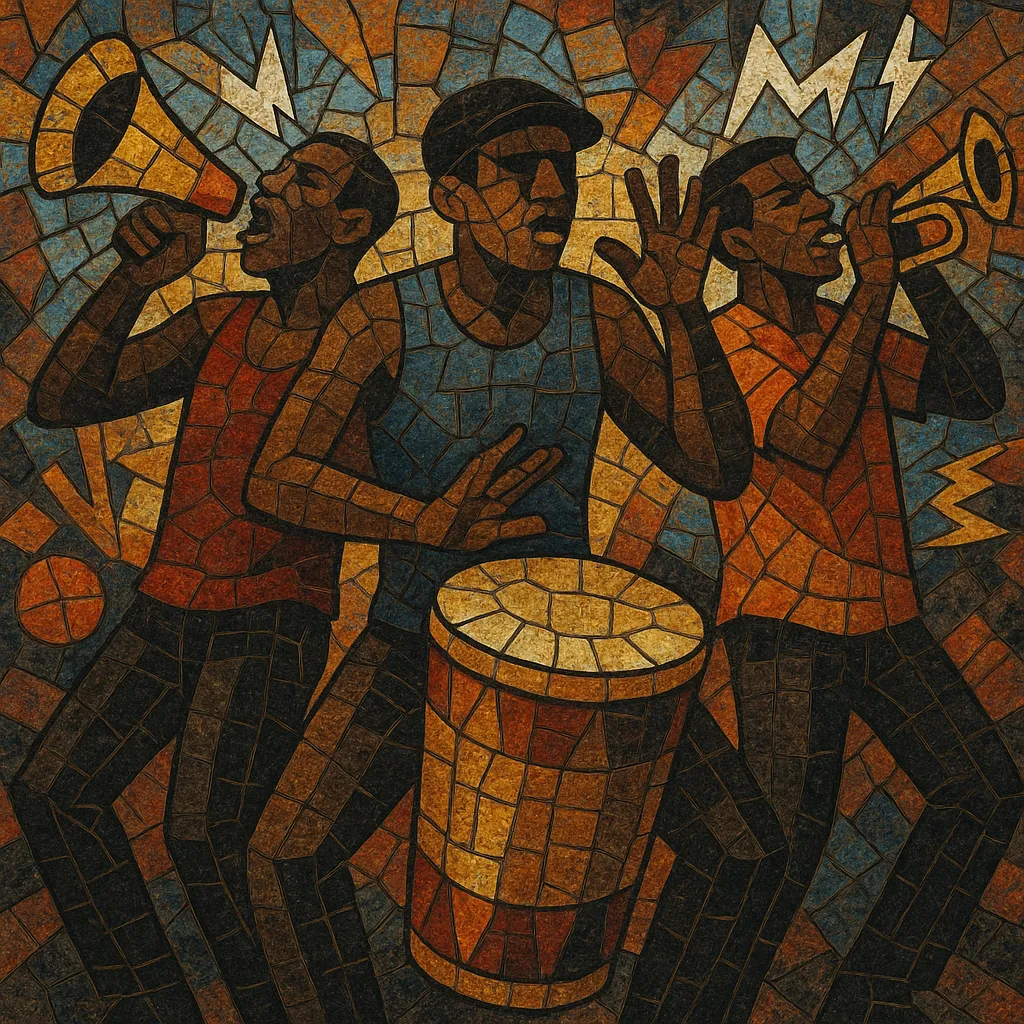Rabòday is a high-energy Haitian electronic street and club style that fuses carnival (kanaval) rhythms, rara/vodou percussion, compas pulse, dancehall swagger, and hip‑hop chant with modern EDM sound design. Built for mass participation and dancing, it features pounding kicks, rolling hand drums, whistle-and-siren FX, and call‑and‑response chants in Haitian Kreyòl.
Emerging in Port‑au‑Prince party circuits and Kanaval routes, rabòday translates the visceral force of rara bands and Vodou drumming into a DJ‑driven format: sub‑heavy drops, looping vaksen‑like horn riffs, and minimal, percussive hooks that cue crowd movements. Lyrically it mixes humor, street bravado, and sharp social commentary, reflecting the immediacy of Haitian urban life.
Rabòday took shape in Port‑au‑Prince as DJs and MCs began recasting the propulsive feel of rara processions and Vodou drumming into electronic, club‑ready tracks. Producers layered four‑to‑the‑floor kicks and dembow‑leaning grooves with tanbou patterns, vaksen‑style horn riffs, whistles, and air horns. The result kept the participatory call‑and‑response of street bands while embracing the sonic punch of EDM, dancehall, and hip‑hop.
Following the 2010 earthquake, street culture and Kanaval became decisive spaces for expression. Rabòday’s portable, DJ‑centered setup and chant‑driven hooks made it a go‑to soundtrack for parties and carnival troupes. Annual Kanaval anthems—often topical and satirical—helped codify the style’s aesthetics: booming subs, relentless percussion breaks, crowd commands, and short, catchy refrains in Kreyòl.
Onstage, rabòday blurs the line between DJ, MC, and hype crew. Drops are punctuated by sirens and breaks designed for synchronized crowd moves. The music’s raw textures, minimal harmony, and heavy low end foreground groove and chant, echoing rara’s collective energy while aligning with global club production values.
Rabòday remains a dominant party and carnival sound in Haiti and its diaspora (Miami, Montréal, New York). While distinct from compas and mizik rasin, it sits alongside them as a contemporary urban voice, influencing the production of carnival tracks and Kreyòl hip‑hop while continually absorbing ideas from EDM and Caribbean club styles.


